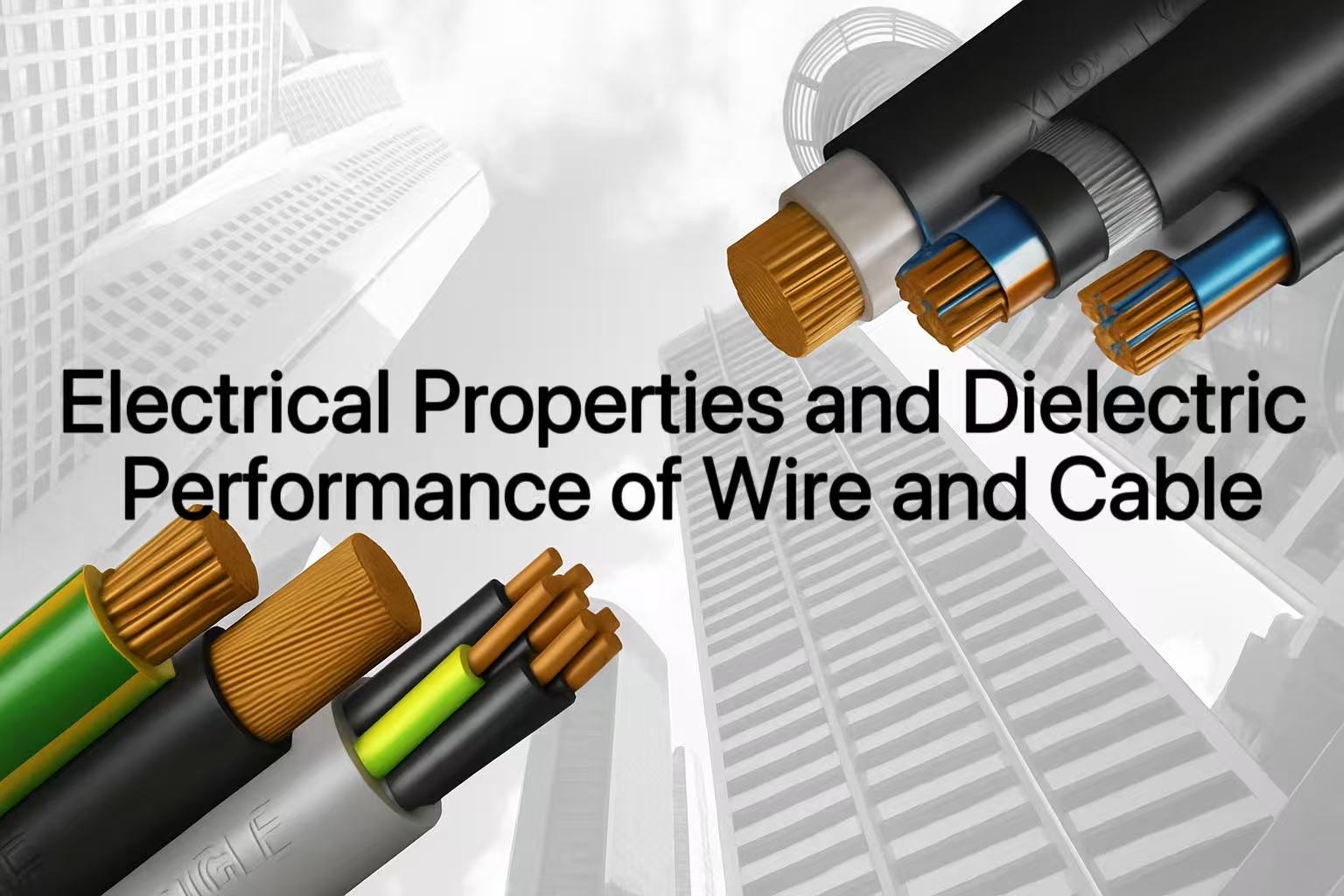Electrical Properties and Dielectric Performance of Wire and Cable
Why do some cables last for decades while others fail under load?
The answer lies in their electrical properties and dielectric performance.
These properties determine:
- Safety (resistance to breakdown)
- Efficiency (energy loss and heating)
- Reliability (long-term performance)
If you select or design cables without understanding these factors, you risk downtime, hazards, and costly failures.
In this guide, we explain key electrical properties, dielectric behavior, testing methods, and material choices.
What Are Electrical Properties in Wire and Cable?
Electrical properties define how cables conduct electricity and resist failure.
The main ones are:
- Conductivity
- Insulation Resistance
- Dielectric Strength
1. Conductivity – How Well a Cable Carries Current
- Definition: Ability of a conductor to allow electric current.
- Materials: Copper > Aluminum in conductivity.
- Impact: Higher conductivity = smaller cable size for same load.
2. Insulation Resistance – Blocking Leakage Current
- Definition: Resistance to current leakage through insulation.
- Higher IR = Safer and more efficient cable.
- Low IR = Heat, energy loss, possible fire.
3. Dielectric Strength – Maximum Electric Field Without Breakdown
- Unit: kV/mm
- Typical Materials:
- XLPE: 20–40 kV/mm
- PVC: 15–20 kV/mm
| Property | Unit | Typical Value |
|---|---|---|
| Conductivity (Cu) | % IACS | 100% |
| Insulation Resistance | MΩ·km | >100 |
| Dielectric Strength | kV/mm | 20–40 |
Understanding Dielectric Performance and Its Role
Dielectric performance impacts signal quality, energy efficiency, and insulation life.
Key parameters:
- Dielectric Constant (εr): Lower is better for high-frequency cables.
- Dielectric Loss (tan δ): Lower means less heat and energy loss.
| Parameter | Preferred Value |
|---|---|
| Dielectric Constant | 2.3–2.6 (XLPE) |
| Dielectric Loss | <0.005 |
Factors Affecting Electrical and Dielectric Properties
Even the best insulation can fail if conditions are wrong:
- Temperature rise: Lowers IR, increases dielectric loss.
- Moisture ingress: Reduces dielectric strength.
- Material quality: Impurities lower breakdown voltage.
- Operating voltage: Higher voltage stresses insulation.
| Factor | Effect on Properties |
|---|---|
| High Temperature | Lower IR, higher dielectric loss |
| Moisture | Reduced dielectric strength, leakage |
| Impure Material | Lower breakdown voltage |
Testing Methods for Dielectric Performance in Cables
You cannot rely on visual checks to confirm insulation quality.
Standard methods include:
Insulation Resistance Test
- Purpose: Check insulation health.
- Method: Apply DC voltage, measure in MΩ.
Dielectric Withstand Voltage Test (Hi-Pot)
- Purpose: Verify insulation under overvoltage stress.
- Method: Apply 2–3× rated voltage for 1–5 minutes.
Partial Discharge Test
- Purpose: Detect microscopic discharges inside insulation.
- Standard: IEC 60270.
| Test Type | Purpose |
|---|---|
| Insulation Resistance | Check overall insulation health |
| Hi-Pot Test | Confirm withstand capability |
| Partial Discharge | Detect early-stage internal defects |
Choosing the Right Materials for Optimal Electrical Performance
Material selection defines dielectric strength, flexibility, and aging behavior.
| Material | Dielectric Strength (kV/mm) | Key Feature |
|---|---|---|
| XLPE | 25–40 | High voltage durability |
| PVC | 15–20 | Low cost, indoor use |
| TPE | 18–25 | Flexible, oil resistant |
| Fluoropolymer | 50+ | High frequency stability |
Material Recommendations:
- XLPE: Medium/high voltage power cables.
- PVC: Low voltage, cost-sensitive indoor use.
- Fluoropolymers: Aerospace, high-frequency, harsh environments.
Conclusion
Understanding electrical and dielectric properties is essential for:
- Safety (preventing breakdown and fire)
- Efficiency (reducing energy loss)
- Reliability (long service life)
✅ Always test before installation and choose the right material for your application.
👉 Looking for cable compounds that meet IEC, UL, and IEEE dielectric requirements?
📩 Contact us for technical datasheets and samples.
FAQ: Electrical and Dielectric Properties in Cables
Q1: What is the difference between insulation resistance and dielectric strength?
Insulation resistance measures leakage current under normal voltage, while dielectric strength measures maximum voltage the insulation can withstand before breaking down.
Q2: Why is dielectric loss important in cables?
High dielectric loss generates heat, reduces efficiency, and accelerates insulation aging.
Q3: Which insulation material has the highest dielectric strength?
Fluoropolymers like PTFE have the highest dielectric strength (50+ kV/mm) and lowest loss.

